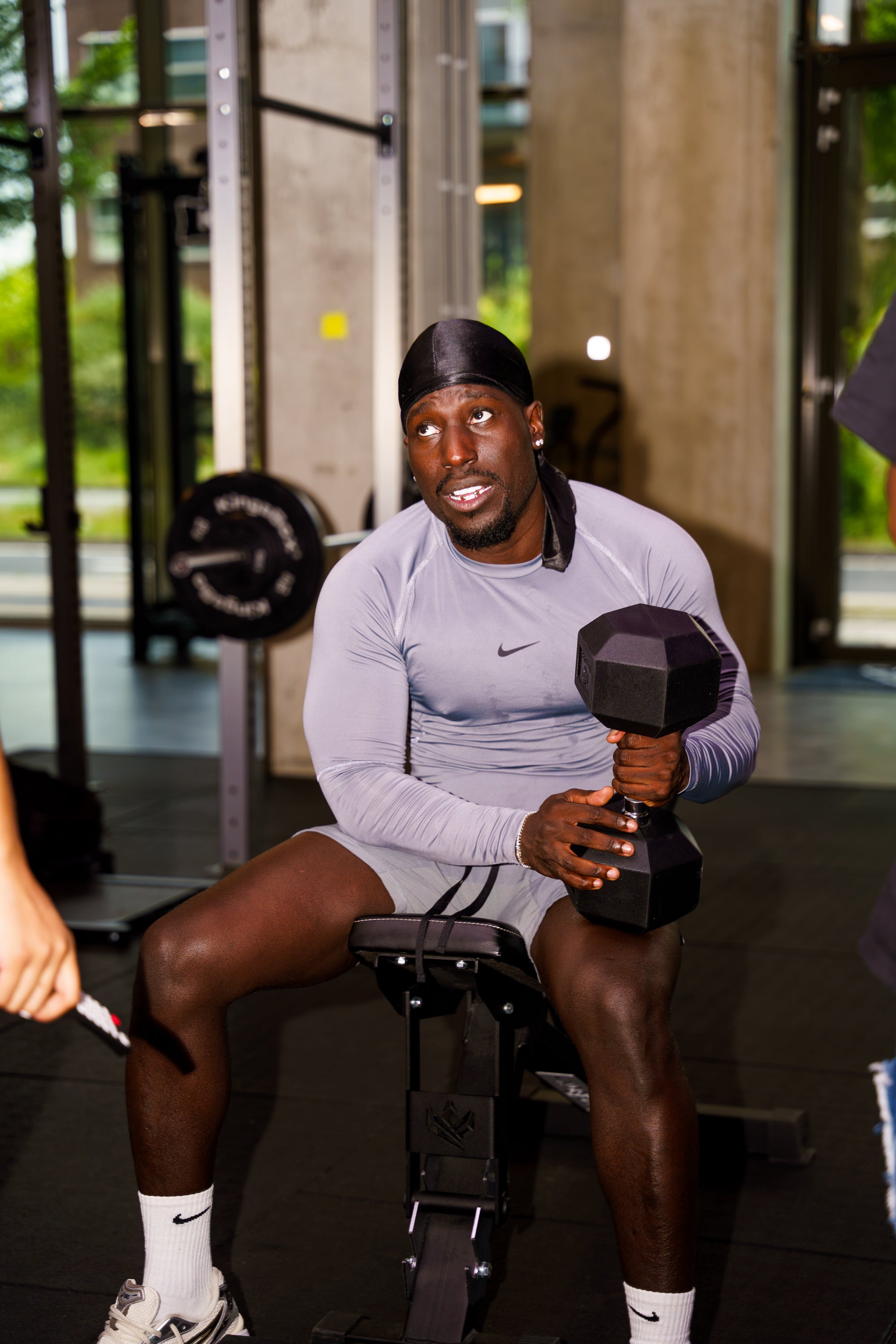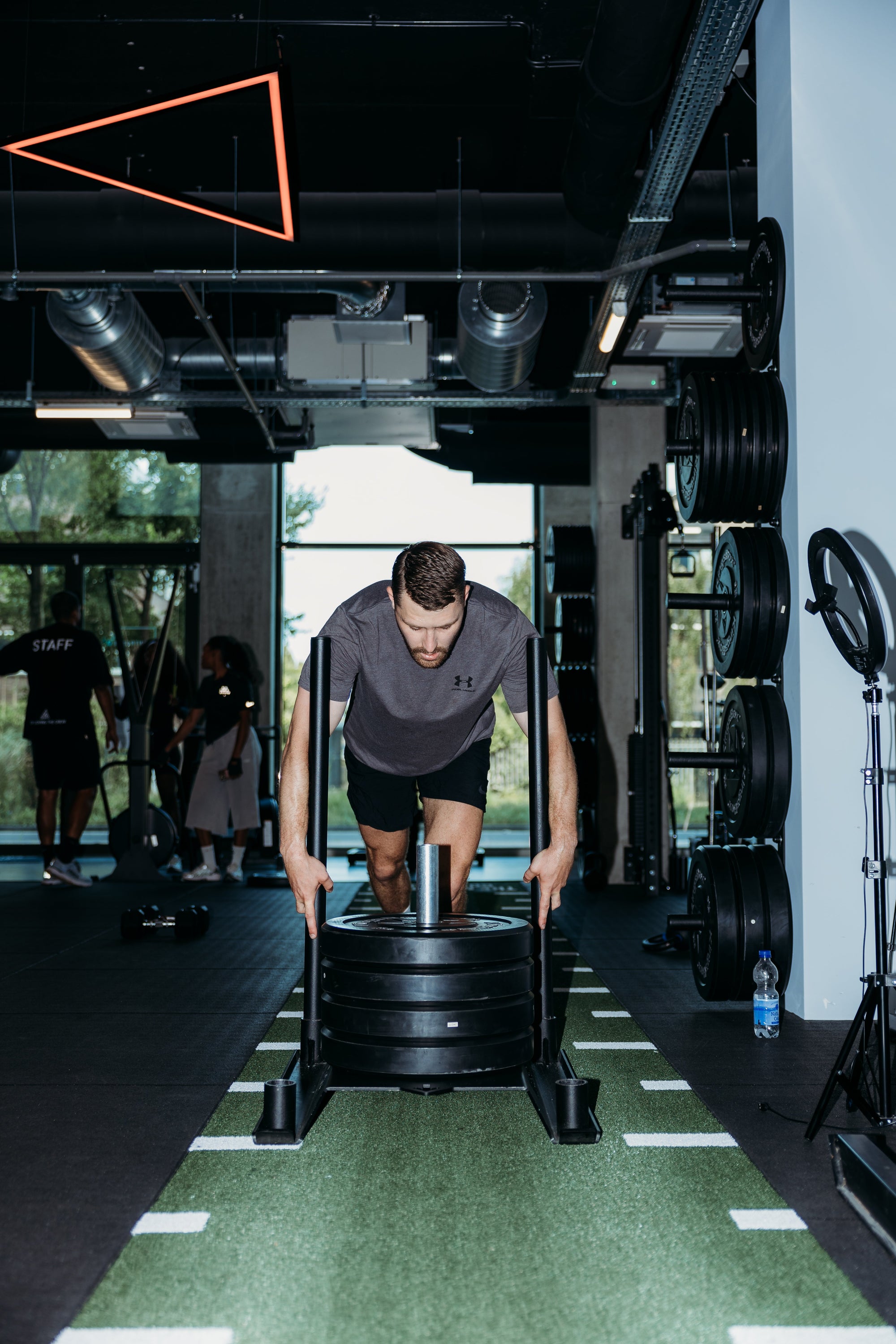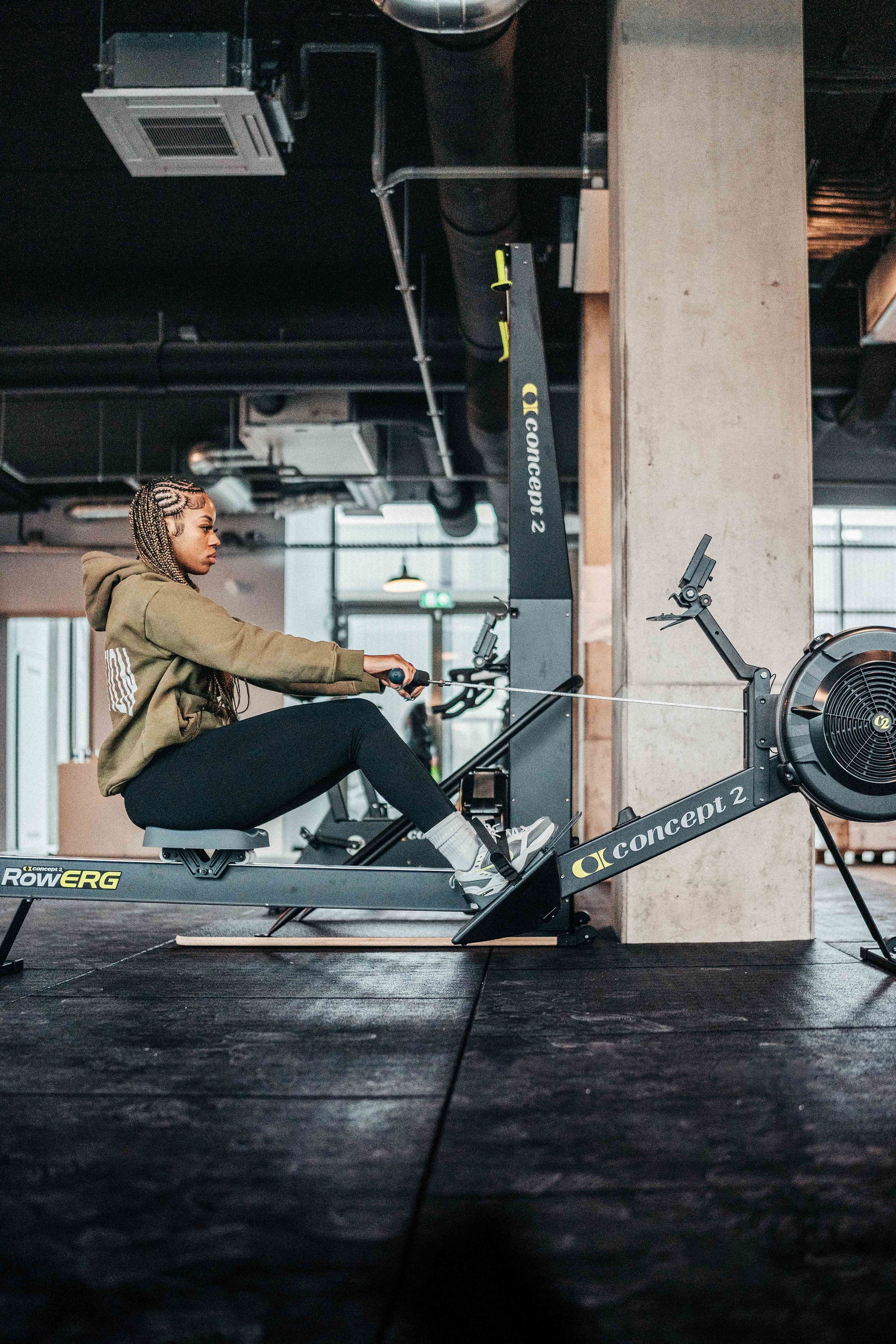Cross-Training for Hyrox: Tips to Enhance Your Overall Fitness
Champion, let’s get real: Hyrox isn’t just about repetitive drills and endless treadmill sprints—it’s about embracing a full-spectrum approach to fitness. Cross-training is your secret weapon to become a well-rounded, unstoppable athlete. At BallinFit, we know that mixing up your workouts not only keeps things interesting but also builds the strength, endurance, flexibility, and mental toughness you need for Hyrox success. Let’s dive into some in-depth examples and real-world tips on how to integrate cross-training into your routine.
Why Cross-Training Matters for Hyrox
Imagine your body as a finely tuned machine. Focusing solely on one type of exercise is like only oiling one part of the engine—it’ll run, but not at its full potential. Cross-training activates different muscle groups, reduces the risk of overuse injuries, and enhances overall performance. For Hyrox athletes, this means:
- Improved Balance and Coordination: Different workouts target various muscles, leading to better overall body control.
- Enhanced Cardiovascular Fitness: By varying the intensity and type of exercise, you keep your heart and lungs challenged in new ways.
- Injury Prevention: Resting overused muscles while working on others gives your body a chance to recover and adapt.
- Mental Refreshment: A varied routine keeps workouts exciting and helps combat burnout.
In-Depth Cross-Training Examples for Hyrox
Let’s break down some effective cross-training methods with practical, in-depth examples that you can incorporate into your training plan.
1. Cycling: Building Endurance and Leg Strength
Why It Works:
Cycling is a low-impact, high-benefit activity that boosts cardiovascular endurance while strengthening your legs—key for those explosive Hyrox sprints and sled pushes.
How to Do It Right:
- Road Cycling: Take a 30- to 60-minute ride on a local route in Amsterdam. Focus on maintaining a steady pace with occasional bursts of speed to simulate interval training.
- Stationary Bike: If the weather isn’t cooperating, hop on a stationary bike. Try a session with 5 minutes warm-up, 20 minutes of interval cycling (alternate 1 minute of high resistance with 2 minutes of low resistance), and 5 minutes cool-down.
- Hill Repeats: Find a route with inclines. Riding uphill engages your quads, glutes, and calves, mimicking the leg strength needed for climbing in Hyrox events.
Example Workout:
“Bike Burnout”
- Warm-up: 10 minutes of easy pedaling
- Main Set: 4 sets of 5-minute hill climbs at a challenging resistance, with 2 minutes of recovery between sets
- Cool-down: 10 minutes of light cycling followed by stretching
2. Swimming: Total Body Conditioning
Why It Works:
Swimming is a fantastic cross-training exercise because it’s low-impact and engages nearly every muscle group. It’s excellent for cardiovascular conditioning, improving lung capacity, and building core strength.
How to Do It Right:
- Lap Swimming: Head to a pool and swim laps for 30 minutes. Alternate between different strokes—freestyle, backstroke, and breaststroke—to vary the muscle groups you work.
- Water Aerobics: Join a water aerobics class. The resistance of water makes even simple movements more challenging, boosting muscle endurance without the risk of joint stress.
- Interval Swimming: Try 10 sets of 100 meters with 30 seconds rest between each. Focus on maintaining good form throughout.
Example Workout:
“Swim Strong”
- Warm-up: 5 minutes of easy swimming
- Main Set: 10 x 100 meters at a moderate-to-fast pace with 30 seconds rest between each
- Cool-down: 5 minutes of gentle swimming and poolside stretching
3. Yoga: Flexibility, Balance, and Mental Focus
Why It Works:
Yoga isn’t just about stretching—it builds core strength, improves balance, and enhances mental clarity. For Hyrox athletes, yoga can be the key to better recovery and increased range of motion.
How to Do It Right:
- Hatha Yoga: Focus on a slow, methodical style that emphasizes alignment and controlled breathing. This is great for building strength and stability.
- Vinyasa Flow: If you’re looking for something more dynamic, a Vinyasa flow can improve cardiovascular fitness and flexibility at the same time.
- Yoga for Recovery: Dedicate 20-30 minutes post-workout to yoga. Poses like the downward dog, warrior series, and child’s pose can help release muscle tension and promote relaxation.
Example Workout:
“Yoga for Champions”
- Warm-up: 5 minutes of deep breathing and gentle stretches
- Main Sequence: 20-minute Vinyasa flow incorporating sun salutations, warrior poses, and balancing postures
- Cool-down: 5 minutes in savasana (corpse pose) to fully relax
4. Strength Circuit Training: A Blend of Cardio and Weights
Why It Works:
Circuit training is an efficient way to boost both strength and cardiovascular fitness. It keeps your heart rate up while targeting multiple muscle groups, making it a perfect complement to your Hyrox training.
How to Do It Right:
- Design Your Circuit: Choose 5-6 exercises that cover different areas of your body—think squats, push-ups, kettlebell swings, planks, and jump rope.
- Time Your Intervals: Perform each exercise for 45-60 seconds with minimal rest in between. After completing the circuit, rest for 2 minutes and repeat 3-4 times.
- Mix It Up: Change the exercises every few weeks to keep your body guessing and prevent plateauing.
Example Workout:
“Total Body Circuit”
- Warm-up: 10 minutes of dynamic stretching
- Circuit (repeat 3 times):
- 60 seconds of squats
- 60 seconds of push-ups
- 60 seconds of kettlebell swings
- 60 seconds of jump rope
- 60 seconds of planks
- Rest 2 minutes between circuits
- Cool-down: 10 minutes of stretching
5. Pilates: Core Strength and Stability
Why It Works:
Pilates focuses on strengthening the core, which is essential for all Hyrox movements. A strong core improves balance, stability, and overall performance during both strength and cardio workouts.
How to Do It Right:
- Mat Pilates: Use a mat and follow a routine that targets the abdominal muscles, lower back, and hips. Focus on controlled movements and proper breathing.
- Pilates Classes: Join a class at your local gym or follow an online session tailored for athletes.
- Consistency Is Key: Incorporate Pilates 1-2 times a week to see improvements in core strength and overall stability.
Example Workout:
“Core Power Pilates”
- Warm-up: 5 minutes of light cardio (e.g., brisk walking or jogging)
- Main Set: 30-minute Pilates mat routine focusing on exercises like the hundred, roll-ups, leg circles, and planks
- Cool-down: 5 minutes of stretching, focusing on the lower back and abdominals
Integrating Cross-Training Into Your Hyrox Routine
Champion, integrating cross-training into your Hyrox regimen is about finding the right balance. You don’t have to do every single one of these workouts every week; mix and match based on your goals, schedule, and how your body feels.
Sample Weekly Cross-Training Schedule
-
Monday:
- Primary Workout: Hyrox training session (e.g., strength and technique drills)
- Cross-Training: 20 minutes of cycling to build leg endurance
-
Tuesday:
- Primary Workout: HIIT session focused on sprint intervals
- Cross-Training: 30 minutes of yoga for flexibility and recovery
-
Wednesday:
- Primary Workout: Strength training (squats, deadlifts, push-ups)
- Cross-Training: 30 minutes of swimming for total body conditioning
-
Thursday:
- Primary Workout: Skill-specific Hyrox drills
- Cross-Training: 20-30 minutes of circuit training to blend strength and cardio
-
Friday:
- Primary Workout: Endurance training (steady-state cardio or tempo run)
- Cross-Training: 30 minutes of Pilates for core strength
-
Saturday:
- Optional: Mixed-modal cross-training session—combine two or more cross-training exercises (like cycling followed by a short yoga session)
-
Sunday:
- Rest or active recovery: A light walk, gentle stretching, or an easy swim
Pro Tip:
Tailor this schedule based on your training intensity and recovery needs. Consistency is key—rotate your cross-training workouts to keep your body balanced and prevent overuse injuries.



